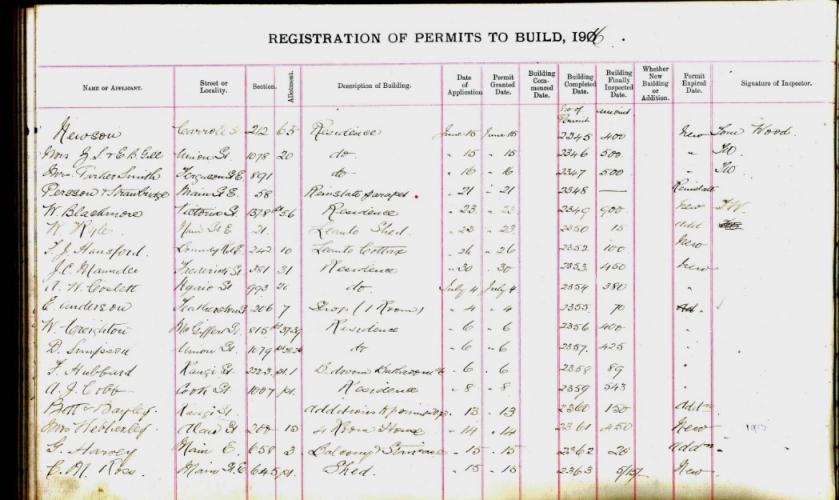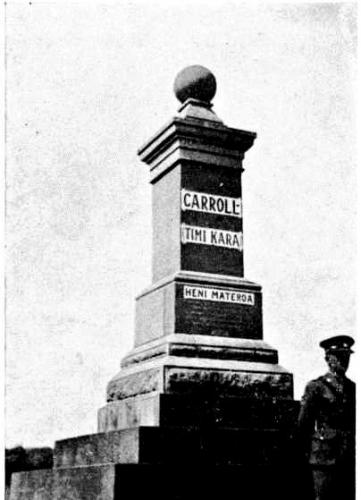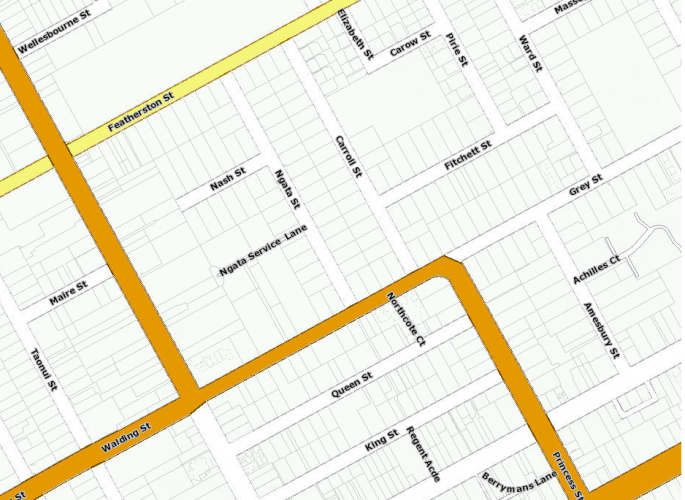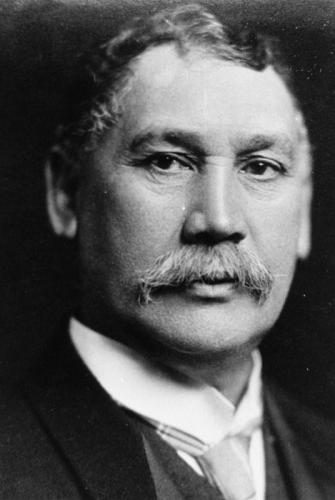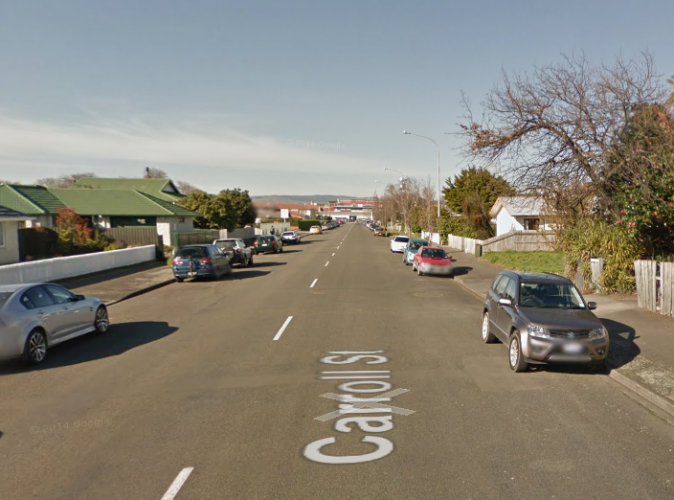036 Carroll Street Palmerston North, View of Carroll Street
Reason for the name
Carroll Street was named in honour of “Sir James Carroll… a former Cabinet Minister and Māori parliamentarian… Minister of Native Affairs (1887-94 and 1899-1912)”.
Research undertaken by AGS Bradfield regarding the names of Palmerston North streets reveals that Carroll Street was named after “Sir James Carroll… a former Cabinet Minister and Māori parliamentarian… Minister of Native Affairs (1887-94 and 1899-1912)”. Carroll Street also runs parallel to Ngata Street, named after Sir Apirana Ngata, another noted Māori leader and former Cabinet Minister.
Palmerston North’s Carroll Street began life as a native reserve between Featherston and Grey Streets, home to what was the known as “The Rope Walk”, an avenue of large pines making up the majority of the area. Upon the reserve being subdivided by the City Council around 1910, the pines were felled and the new lease areas were fenced off by the owners, the Convent High School, necessitating the creation of a new thoroughfare between Featherston and Grey Streets. Tenders were opened in June 1912 for a contract to build the new street, water mains were installed in 1914, and by the following year street lamps had been added to entirety of the street.
Carroll Street runs northwest to southeast along the northeastern quadrant of Palmerston North. It is intersected in the north by Featherston Street and on its south end by Grey Street. Fitchett Street intersects Carroll Street along the southern end and runs parallel to Grey Street. The area is primarily residential, with multiple Metlifecare villas running along the street and on both sides of the Fitchett Street corner.
Author: Evan Greensides, Research Assistant – Archives, Palmerston North Libraries and Community Services
Sir James Carroll - Inspiration behind WWI’s Maori Contingent
Sir James Carroll (1857-1926) was born in Wairoa on 20 August 1858, the son of Joseph Carroll, an agriculturist, sheep farmer and importer of stock and machinery, and Tapuke, a chieftainess of the Wairoa hapū of Ngāti-Kahungunu. He spent his childhood in the Ureweras under leading tohungas, eventually transferring to Thompson’s School in Napier. In 1869 he enlisted with the native contingent under F E Hamlin and was involved in the pursuit of Te Kooti throughout the North Island. He was mentioned in dispatches as having ‘behaved in all cases with great steadiness’, and for his services received the New Zealand Medal and a bonus of £50. He went on to serve as a cadet under Native Commissioner Locke, followed by a commission in the Native Office in Wellington under Sir Donald McLean.
After acting as an interpreter for Parliament, Carroll resigned in order to contest the Eastern Māori seat. He was defeated by Wi Pere, but returned in 1887 to defeat him at the next election. Carroll held this seat until 1894 when he ran for the general seat of Waiapu (Gisborne) and won, going on to hold the area for the next 25 years.
By 1900 Carroll had become Minister of Native Affairs as part of the Seddon Ministry, enacting policy that was conservative and carried important measures extending native government, most notable being the Māori Councils Act of 1900. Carroll’s objective was to conserve and extend the rights of Māori and to encourage the co-operative farming of their lands. His personality was dignified, and he was an eloquent speaker in both Māori and English.
At the outbreak of The Great War, a Recruiting Committee was formed, including prominent Māori citizens such as Sir Maui Pomare, A T Ngata, Dr. Peter H Buck, Taare Parata and rounded off with Sir James Carroll. This Committee’s first notice stated, “This is a notice that is desired that a Maori Contingent numbering 550 men should be sent to Samoa and Egypt… It is hoped that the name of the Maori Race, though small, should be heard of in the midst of the many nations”. Carroll also made a trip to the Western Front in 1917 to visit New Zealand troops. Carroll’s wife, Hēni Materoa-Carroll, also helped by raising funds for Māori soldiers serving abroad during World War I, mainly through the Eastern Maori Patriotic Association.
Although Carroll lost his seat in Parliament to Lysnar in 1919, he was again a prominent figure in the Massey government through his participation in the Legislative Council. On 18 October 1926, just nine days after giving an eloquent oration for his friend William Herries, James Carroll passed away. He was survived by his wife Heni Materoa-Carroll, and although they had no children, they raised over 30 foster children together.

